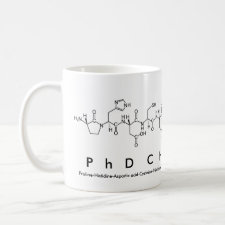
Authors: Pande VS, Grosberg AY, Tanaka T
Article Title: Phase-diagram of heteropolymers with an imprinted conformation.
Publication date: 1995
Journal: Macromolecules
Volume: 28
Issue: (7)
Page numbers: 2218-2227.
DOI: 10.1021/ma00111a016
Abstract: Recently, theoretical models to employ physical interactions between monomers for the selection of appropriate heteropolymer sequences have been suggested. The Shakhnovich-Gutin model simulates the in vivo creation of natural proteins by molecular evolution. Our model suggests a method for the in vitro synthesis of heteropolymers which are ''protein-like'' in the sense that they have a unique 3D fold encoded in the sequence; furthermore, certain properties of this fold, such as the presence of an active site capable of specially binding to a given target molecule, are under the control of our synthetic procedure. mie show that the phase diagram of the polymer chain prepared by either method, besides random and frozen globular phases, also includes a third globular phase, which we call the target phase. The random globule is comprised of a vast number of compact conformations, and although the frozen globule is dominated by one or a few conformations, these are not under any control and generally do not possess any desirable properties. On the other hand, the target phase is dominated by the desirable conformation. Using mean field replica theory, we are able to examine a heteropolymer chain which consists of an arbitrary set of monomers with short-range interactions. We discuss crude prescriptions for the experimental realization of the target phase regime



Join the Society for Molecular Imprinting

New items RSS feed
Sign-up for e-mail updates:
Choose between receiving an occasional newsletter or more frequent e-mail alerts.
Click here to go to the sign-up page.
Is your name elemental or peptidic? Enter your name and find out by clicking either of the buttons below!
Other products you may like:
 MIPdatabase
MIPdatabase









